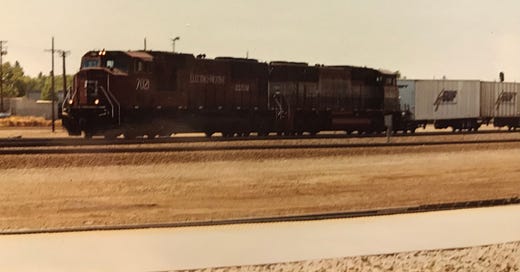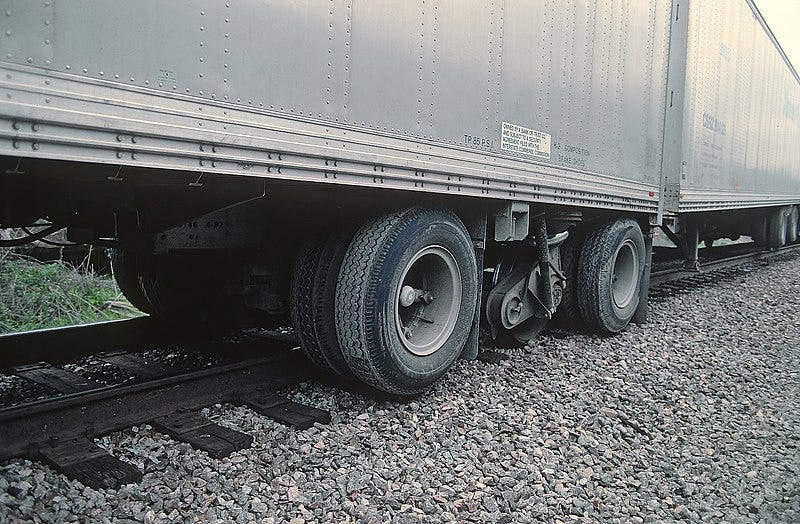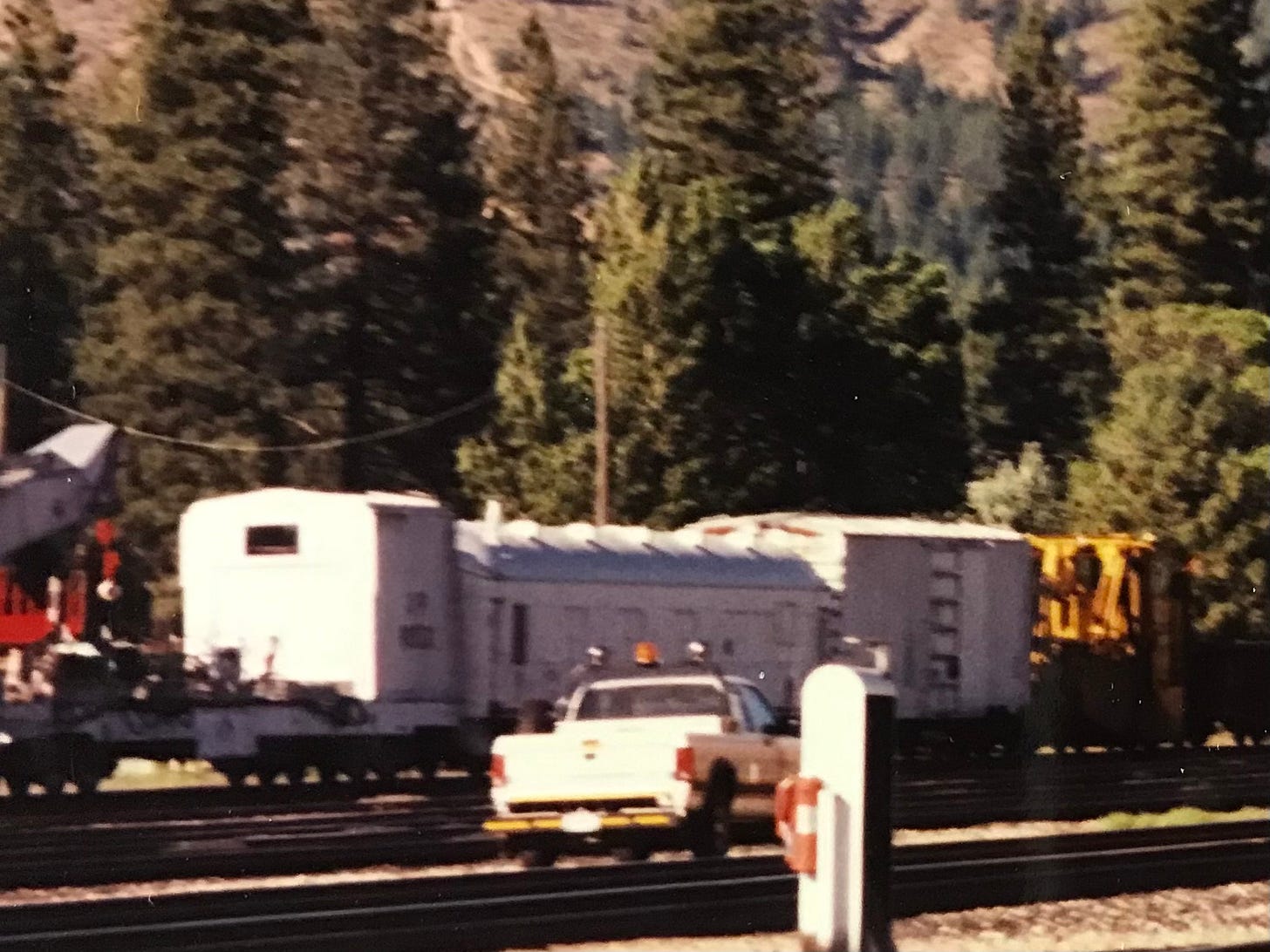Combo Flanged Steel-wheel And Rubber-tired Equipment
Railroads aren’t always about running trains. From time to time trackage must be given up to address maintenance needs. And, oftentimes in this regard is where the combination rubber-tired and flanged steel-wheel equipped vehicle enters frame.
I’ve seen situations where older jointed rail was removed from its tie-supported base — the railroad right of way. And, in its place was installed rail in quarter-mile lengths. And the equipment that does the work — at least the ones that I’ve seen — were outfitted with both flanged steel-railroad and rubber-tired wheels.
But, this isn’t the only piece of equipment that has both wheel types.
Roadrailers (like the ones seen in the photos at top and above), have them both as do what are commonly referred to as high-rail vehicles.
One very interesting piece of information that I learned about high-rail vehicles is that in order for the rubber-tired wheels to be centered over each independent rail, the rims that the tires are mounted on must be flipped such that the side of the rim that typically faces outward will face inward toward the vehicle axles instead. It is through the rubber tires in making contact with the steel rails that enables traction.
I have also borne witness to a high-rail vehicle transitioning from roadway-based to railway-based running. These vehicles come equipped with a steering wheel locking mechanism to ensure that the steering wheel does not deviate from its centered position.
And lastly, these vehicles also come outfitted with what are called “shunts”. Shunts, in essence, are steel-wire brushes that make contact with the rail heads while the vehicle rolls along the rails. Their purpose is to cause automatic warning-device activation at railroad crossings.
Image credits: Alan Kandel (top, bottom); Roger Puta/Wikimedia Commons (2nd)
Updated: Jun. 24, 2024 at 4:47 p.m. PDT.
All material copyrighted 2024, Alan Kandel. All Rights Reserved.






